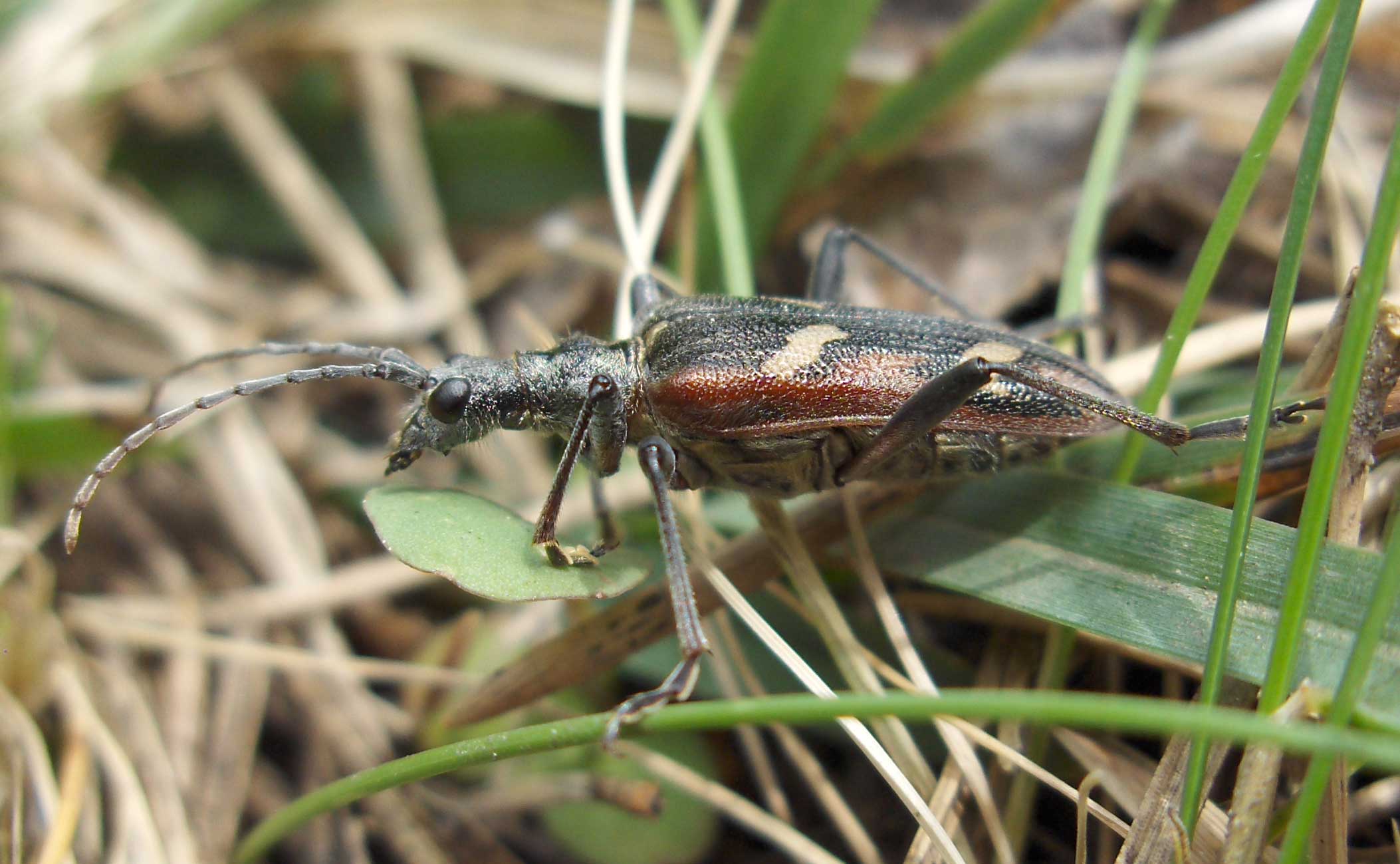- Rhagium bifasciatum
Taxobox | name = "Rhagium bifasciatum"

image_width = 280px
regnum =Animal ia
phylum =Arthropod a
classis =Insect a
ordo = Coleoptera
familia = Cerambycidae
subfamilia =Lepturinae
genus = "Rhagium "
species = "R. bifasciatum"
binomial = "Rhagium bifasciatum"
binomial_authority = Fabricius, 1775"Rhagium bifasciatum", sometimes called the two-banded longhorn beetle, is one of the commonest
longhorn beetle s inEurope ,Turkey and theCaucasus , although it is absent from the far north-east of Europe and some offshoreisland s, such asMalta . It may reach 22 mm long and can be distinguished by the two prominent pale yellow bands on each of the elytra, although up to seventeen different patterns have been recognised [cite book | id=ISBN 0-85263-897-3 |title=Longhorn Beetles of the British Isles |author=Norman Hickin |publisher=Shire Publications |year=1999] .Like other longhorn beetles, "R. bifasciatum" lays its eggs in dead wood, mostly of
conifer ous trees, where they bore deep, broad tunnels until they are pupate after about two years [cite web |url=http://www.naturspektrum.de/spezies/rhagium_bifasciatum.php |title=Gelbbindiger Zangenbock ("Rhagium bifasciatum") |publisher=www.naturspektrum.de |accessdate=18 June |accessyear=2006] . The adults feed on a wide variety of coniferous and broad-leaved trees [cite web |url=http://www.toyen.uio.no/norcol/cerambyc/R_bifasciatum.html |title="Norges Biller" (The Beetles of Norway) |publisher=Naturhistorisk museum,University of Oslo |accessdate=18 June |accessyear=2006] .References
Wikimedia Foundation. 2010.
